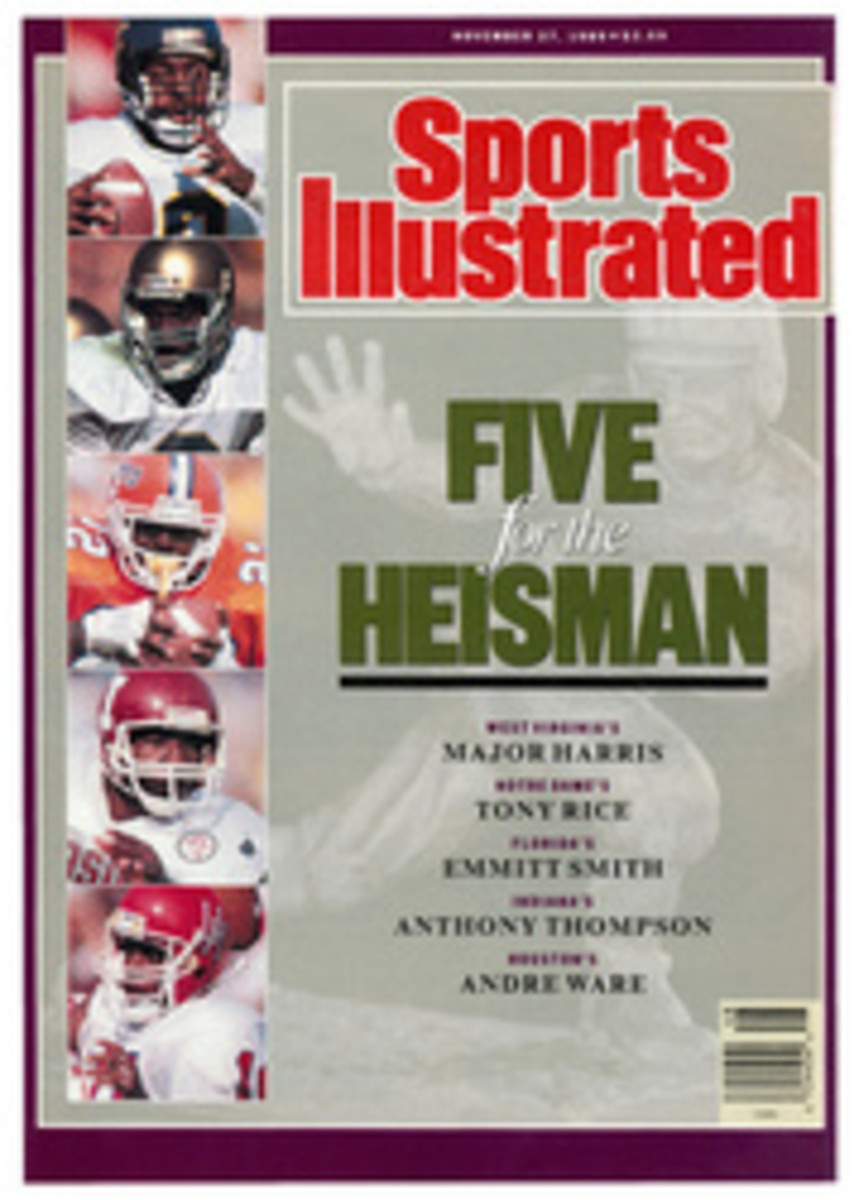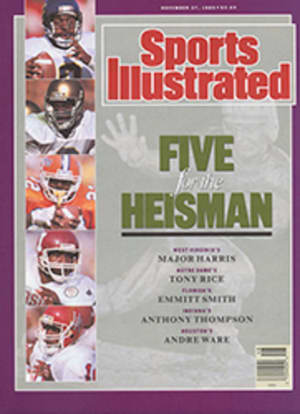
A WAY WAS FOUND
On Sunday evening, in a Sweltering locker room at the National Stadium in Port of Spain, Trinidad, 25-year-old Paul Caligiuri of Diamond Bar, Calif., sat on a bench, drenched with champagne, and groped for words to express his feelings. Who could blame him? Just a short while ago he had scored what might be the most significant goal in the history of U.S. soccer.
And what a goal it was. As Caligiuri described it, "I picked up a square ball from midfield out on the right. I knocked it over the defender with my right foot, then took the shot with my left." He let the ball fly from 25 yards out, and it curled away from the goalie, Michael Maurice, hitting the back of the net. That goal was all the U.S. needed to beat Trindidad & Tobago 1-0 and move into the finals of the World Cup for the first time in 40 years.
Up until match time, though, it seemed as if the U.S. were destined to spend another four years in the wilderness. It had played scoreless ties in its two previous qualifying matches, against Guatemala and El Salvador, the two weakest sides in the five-team CONCACAF zone round-robin. Now the U.S. and T & T, as the locals call their country, both had 3-1-3 records. But T & T had a larger differential between goals scored and goals allowed than the U.S. As a result, the U.S. would have to win the match to qualify for the second CONCACAF spot in the 24-team World Cup finals, which will take place in Italy next summer. (Costa Rica had already clinched the other berth.) All T & T needed was a tie.
Moreover, T & T was on an upswing. It had won its last two games, and it would be playing before an impassioned home crowd. And, as the match loomed, it became obvious that the Americans were up against not only a surging team but also a soccer-crazed nation of 1.22 million people. Last Friday, as the Americans headed south from their camp in Cocoa Beach, Fla., Port of Spain had already moved into high carnival gear. Downtown was awash in a sea of red, as tens of thousands of Trinidadians appeared wearing T-shirts in the dominant color of the national flag. Steel bands on flatbed trucks belted out calypso songs on every street corner. YANKEE, WELCOME TO WATERLOO, read one poster. Another said, NO WAY U.S.A.!
This overwhelming show of confidence seemed to be orchestrated by T & T's coach, Everald Cummings. A few days before the match, which he considered a mere formality, Cummings said that when he took his team to Italy, "we don't intend to be a walkover."
The Trinidadians believed they deserved a World Cup berth, because in their minds they had been robbed of a spot in the 1974 Cup finals. In a key qualifying game against Haiti at Port-au-Prince, T & T netted the ball five times, but the referee disallowed four of the goals, and Haiti won 2-1. FIFA, the governing body of soccer, suspended the referee but refused to reverse the result.
The news that leaked from the U.S. training camp before Sunday's match wasn't good. Frustration over the team's lack of offense had caused dissension among the players, and there was talk that coach Bob Gansler would do well to start polishing up his rèsumè. At a press conference last Saturday in Port of Spain, he sounded downbeat. "How did [midfielder Hugo] Perez look in training?" Gansler was asked.
"Sometimes good, sometimes not so good." he replied. Perez, who had scored the U.S.'s only goal in its previous three matches, seemed to be its sole hope for putting points on the board. But he had missed the two previous games because of a groin pull and would spend the entire T & T game on the bench.
"Are you confident?" another reporter asked Gansler.
"I think so."
Not exactly inspiring words. When Sunday arrived, the U.S. had reason to be less than optimistic. Six hours before the game the stadium was filled with red shirts. Eventually, there were more red flags snapping in the breeze than you would see outside the Kremlin on May Day. As soon as play began, though, the U.S. showed it was a different team from the one that had staggered through its last few games. In the first minute, forward Peter Vermes, who plays first-division soccer in the Netherlands, pounced on a defensive error in the T & T box and almost scored. From then on, the Americans, led by Vermes and midfielders Tab Ramos and John Harkes, fought for every 50-50 ball and took control of midfield.
Then, in the 31st minute, Caligiuri, who has played on a West German second-division team for three years, broke away and put in his historic goal, ending a U.S. scoring drought that had lasted for 239 minutes of qualifying competition. The score came, oddly enough, just as some 37,000 fans were chanting, "We're goal hungry."
If the first half was Caligiuri's, the second belonged to 20-year-old goalkeeper Tony Meola, a sophomore at Virginia. Time after time Meola, who hadn't allowed a goal in his three previous qualifying matches, held off the red tide of T & T jerseys. Once, he stopped an almost certain score when defender Steve Trittschuh of the U.S. hit a badly judged back pass toward his own goal. Meola dived on shots and snatched them out of the air. "That second half," he said later, "I felt as if I was giving birth every minute for 45 minutes."
But the defense held, the whistle blew, and the U.S. was on the road to il Mondiale. "We're big time now!" yelled David Vanole, who had been replaced by Meola as the team's No. 1 goalie.
Those T & T fans were big time as well. They had sung their hearts out and been bitterly disappointed. Now they stood and called for their team to come back onto the field, cheering them again as the players wept in defeat.
Later, an American reporter spied Prime Minister A.N.R. Robinson in the crowd. "It would be wonderful if the U.S. had soccer fans like yours," the reporter told him.
"Hey," Robinson replied, "why don't you borrow ours?"
Sounds like an excellent idea.
PHOTO
GEORGE TIEDEMANN
The Americans took on not only a soccer team but a soccer-crazed nation as well.
PHOTO
GEORGE TIEDEMANN
Caligiuri was the big gun.
PHOTO
GEORGE TIEDEMANN
In the second half, Meola (in yellow) shut down the T & T attack with dramatic saves.

